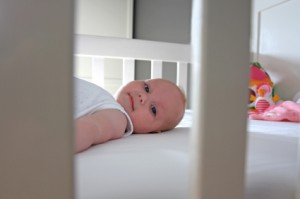Mixed Cerebral Palsy in Children

Mixed Cerebral Palsy
Cerebral palsy has four main categories which can differ by the location of the damage on the brain and the effect it has on someone’s movement and speech: spastic, athetoid, ataxic and mixed. On this page, we’re going to focus on mixed cerebral palsy, and why some suffer from multiple forms of cerebral palsy (CP).
Mixed CP is a term used for a situation in which a person’s cerebral palsy consists of a combination of symptoms; spastic, ataxic and athetoid movements. Approximately 10% of children with CP suffer from “mixed” CP, and most cases involve a combination of both spastic and athetoid CP; however, in some rare cases a combination of all three types can be found. Due to the symptoms associated with mixed CP based on brain damage, no two people with mixed cerebral palsy are exactly alike. Each case is different and will be handled on an individual basis by a medical professional.
Spasticity & Athetosis
As multiple areas of the brain could have been affected (including both the pyramidal and extrapyramidal areas), patients suffering from mixed CP experience signs of multiple involuntary movements. Someone’s impairments can fall into two categories, spastic and non-spastic movement. The mixed CP incorporates both athetoid CP consisting of involuntary movements, as well as the tight muscle tone associated with spastic CP. With the spastic CP behavior usually dominating primary involuntary movements, it can take several years for symptoms of the athetoid movement to become apparent, and lead to a mixed CP diagnosis.
Since mixed CP associates with a form of spastic CP, patients experience severe movement limitations, and can result in stiff and jerky movements making it difficult to move positions or hold and release objects with their hands. The brain controls this type of involuntary movement, and individuals with mixed CP have difficulty in everyday activities such as holding items, eating, speaking and associated skills. Mixed cerebral palsy children also have low muscle tone which can cause difficulty in maintaining posture and moving while upright.
Getting Help
As one might assume, because of the combination of symptoms in a person with mixed type cerebral palsy, treating the condition can be more challenging than treating someone with just one form of the condition.
Many options are available for someone suffering from mixed CP, and help is out there to aid families affected by a family member with mixed CP. The main focus for physical therapy is to help teach the individual how to control movements, focus on controlling pain, maximize self independence and enhance the ability to communicate with those surrounding them.
